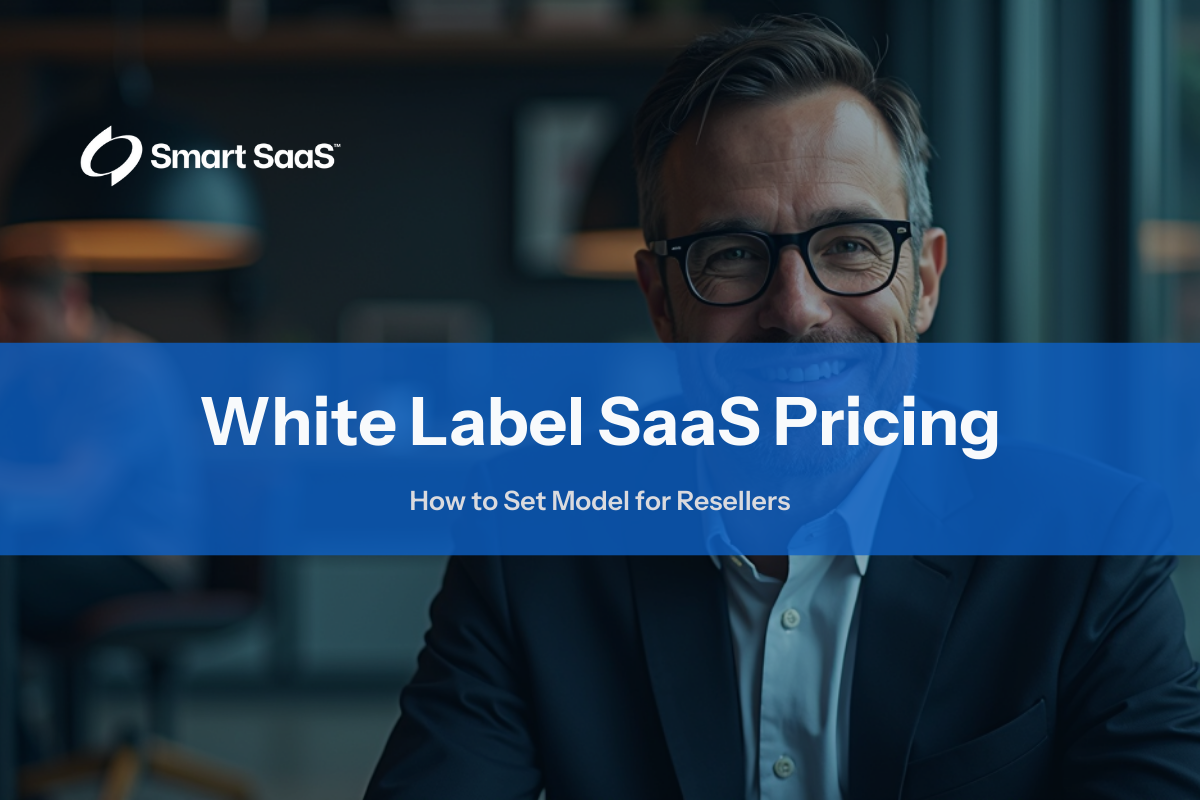

Monday, March 17, 2025
Kevin Anderson
White-label software solutions have become increasingly popular for businesses looking to expand their offerings under a custom brand. By repackaging existing SaaS platforms and selling them to end clients, resellers can broaden their service portfolios without building applications from scratch. However, deciding on white label SaaS pricing can be tricky. You need a model that reflects your costs, offers adequate margins to your reselling partners, and aligns with the value added through custom branding or extra features. This article explores how to structure your pricing to support healthy reseller relationships, ensure profitability, and resonate with end customers who see your white-labeled product as a unique solution.

White-label models let resellers rebrand a provider’s software with their own logos, themes, and domain, giving the impression it’s a fully native service. While this approach accelerates product expansions and fosters deeper client relationships, the underlying pricing model for SaaS has to accommodate multiple layers of fees—like licensing costs, potential API access charges, and the reseller’s own margin. If done poorly, pricing can become opaque or unprofitable, leading to dissatisfaction among partners or confusion for end users.
This guide offers insights into SaaS pricing consultants' tactics, discussing both the basics (monthly subscription rates, user fees) and the complexities (reseller agreements, custom branding surcharges, value-added services). By exploring real-world strategies, you can structure your white-label offering so that each partner sees clear paths to revenue while you remain financially secure.


White-label SaaS typically involves the provider granting rights to a reseller or partner, who then rebrands and markets the solution to their own clients. In essence, you’re licensing out your platform for a monthly or annual fee, giving resellers a robust product they can customize with new packaging, domain mapping, or even expanded services. This arrangement allows the original vendor to concentrate on product development and support, while resellers handle local marketing and customer engagement.
Resellers, in turn, must charge their end customers a price that not only covers the licensing costs but also provides room for their own profit margins. Some providers incorporate private-label software modules or specialized branding tools, charging extra for advanced customization. The result is a chain of subscription reselling: the SaaS provider receives consistent income from the reseller, while the reseller earns recurring revenue from end users. Balancing these fees is essential to ensure that both parties benefit equitably.
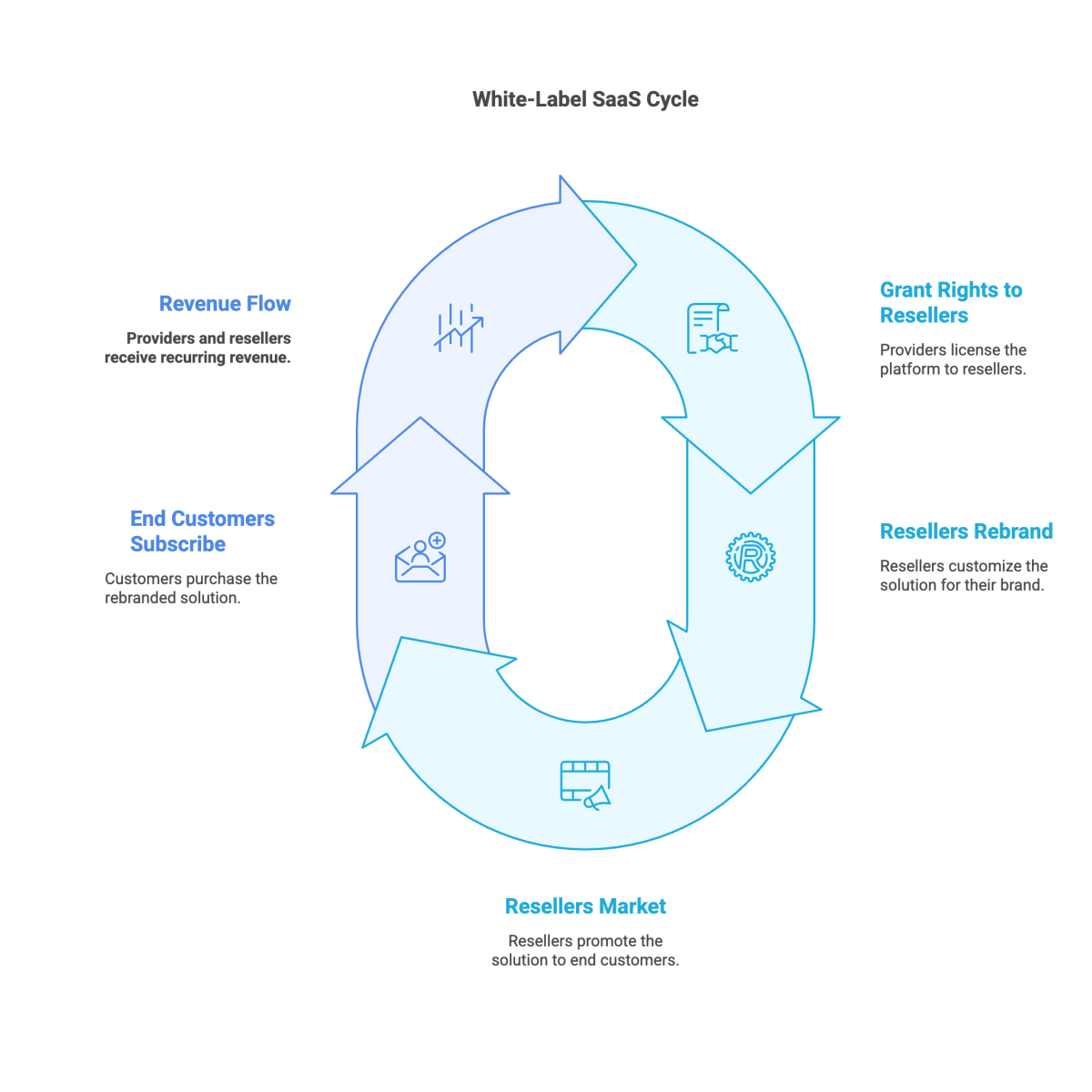

Reseller agreements outline how the vendor and reseller split responsibilities, costs, and support obligations. A robust contract addresses everything from monthly licensing fees and rebranding guidelines to value-added services such as custom onboarding or analytics. Providers must ensure that the base cost covers ongoing development and support, while resellers should look for clear inclusions—such as defined seat limits or usage caps—to avoid unexpected charges.
Licensing fees often form the backbone of white-label SaaS pricing. These can be structured as a flat monthly rate or a tiered system based on factors like user seats, data volume, or feature sets. Some providers also adopt a commission-based approach, taking a percentage of the reseller’s revenue. While this model fosters a shared stake in performance, it can complicate accounting. Alternatively, a fixed monthly fee simplifies the arrangement, allowing resellers to retain all incremental revenue earned beyond the baseline cost.
The ability to rebrand the platform is a major draw of white-label solutions. Some vendors charge an extra “branding license” or one-time setup fee for customization, along with ongoing maintenance costs for advanced design control. Bundling these rebranding tools into mid- or high-tier licensing plans helps resellers appreciate the added value while ensuring that the provider recovers the overhead required for maintaining branding frameworks.
White-label products often offer optional services—such as dedicated onboarding, priority support, or specialized integrations—that can be charged separately or packaged into premium reseller tiers. This approach allows both small agencies and larger firms to choose the level of support that aligns with their market strategy, ultimately enhancing revenue opportunities for all parties involved.
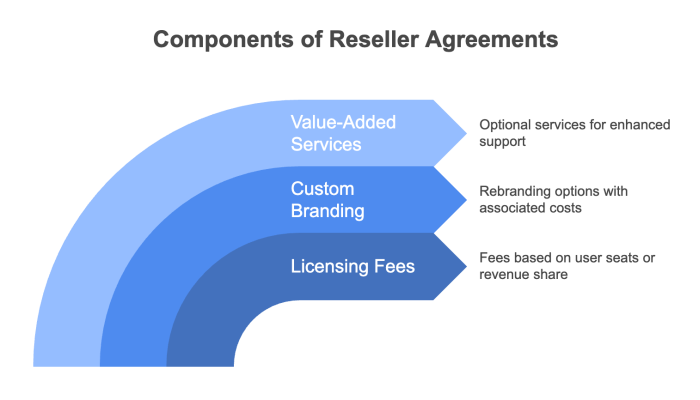

White-label SaaS solutions can be priced using several standard models. Some common approaches include:
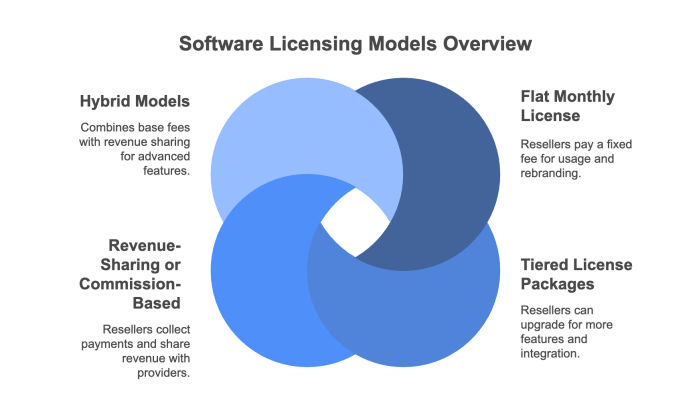
Resellers can boost their revenue by enhancing the platform’s base functionality with additional value-added services. By offering training, consulting, and specialized workflows, resellers can justify a higher price point to end users and gradually scale up their revenue.
Moreover, resellers might incorporate API access pricing if they deeply integrate the white-labeled platform into a client’s ecosystem. This fosters customer stickiness, as integrated solutions make it less likely for end users to churn. Additionally, some resellers create multi-tier pricing structures of their own—layering unique branding or custom data modules over the base offering. Such “pricing within pricing” strategies can multiply revenue if implemented transparently and fairly.
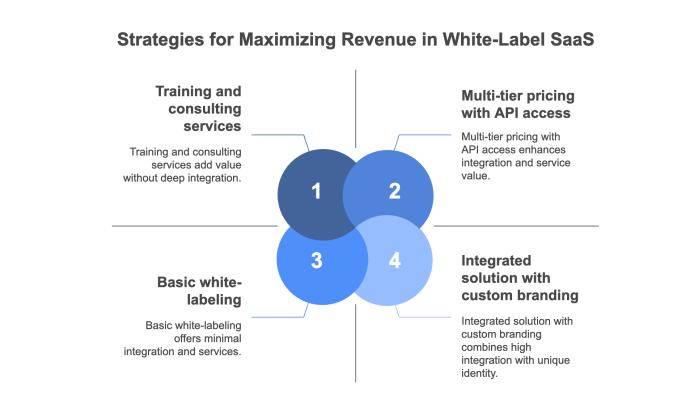

For the SaaS vendor, it is crucial to clearly define what your licensing covers—from software updates and hosting to standard support services. Resellers should also understand their responsibilities, such as marketing, providing frontline support, or executing custom brand guidelines. This clear division of roles helps ensure a cohesive user experience and minimizes pricing disputes.
Hidden fees or ambiguous thresholds can strain trust. In white-label deals, multiple layers of charges—such as extra fees for additional seats or enhanced branding—must be documented meticulously. For example, if usage exceeds the reseller’s licensed allotment, a clearly defined overage fee should apply. Many providers offer web portals for real-time usage tracking to prevent unexpected charges and foster trust.
If your pricing model relies on revenue sharing, clearly articulate how commission percentages change at specific revenue milestones. Some vendors reward high-performing resellers with lower commission splits, while smaller or newer resellers may accept a higher rate in exchange for reduced upfront costs. This tiered approach ensures mutual benefit as the reseller scales.
Resellers often need guidance on how to position or upsell the platform. Providing them with marketing materials, best practices for custom branding, and co-branded educational content can significantly enhance their success. Open lines of communication ensure that resellers are well-equipped to meet customer demands and that any issues are resolved promptly.
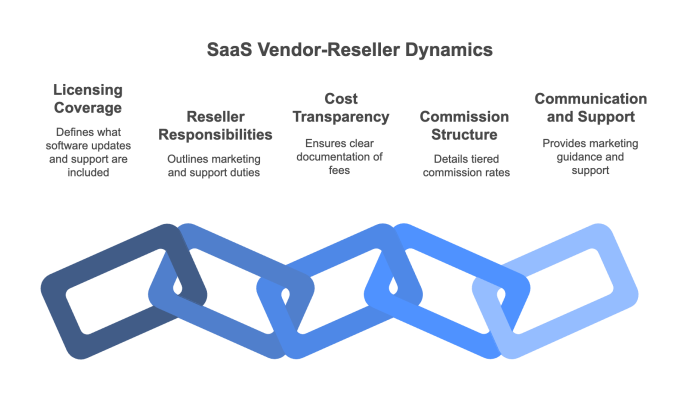

A systematic approach to pricing white-label SaaS ensures that each partner arrangement is consistent and profitable. Follow these steps:


White label SaaS pricing demands a clear, balanced approach that rewards both the SaaS vendor and the resellers who market, rebrand, and customize the solution. By incorporating licensing fees, value-added services, and, when appropriate, commission-based or tiered pricing structures, you can meet the diverse needs of reselling partners while ensuring profitability and customer satisfaction.
As you build or refine your pricing model, remain transparent about seat counts, API limitations, and branding surcharges. Resellers appreciate predictable fees, accessible upgrade options, and ongoing support through marketing materials and software improvements. When approached with fairness and clarity, the white-label model can foster long-term, healthy partnerships that drive recurring revenue and expand your product’s market reach.